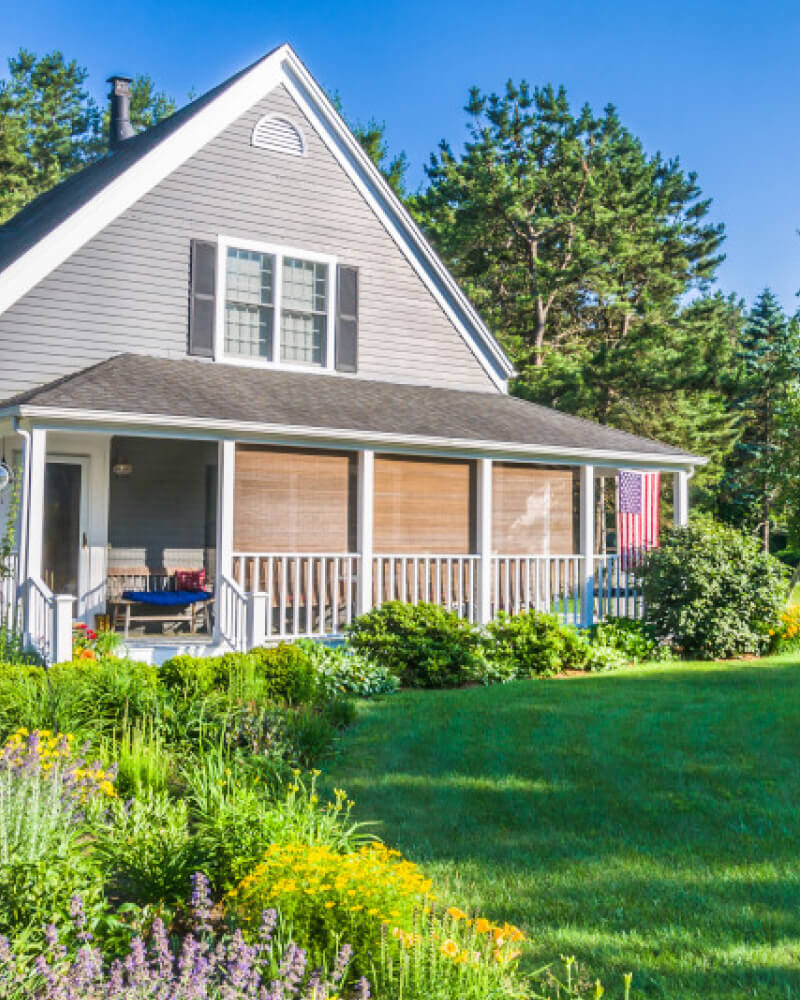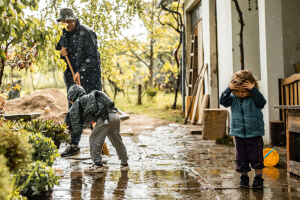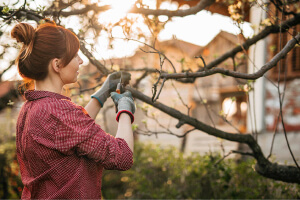Homeowners Insurance
Homeowners insurance provides financial protection for the unexpected—like damage to your home or belongings, and liability for injuries caused to others on your property. It typically combines various insurance coverages into one policy to safeguard against some of the most common perils a property owner may face, such as loss or damage from fire, wind, theft, hail, lightning, burst pipes, vandalism, and more.
What Does Homeowners Insurance Cover?
A typical homeowners insurance policy usually includes six key coverages to cover your home, other structures on your property, the contents inside your home, living expenses when a covered claim makes the home temporarily uninhabitable, your liability for others’ bodily injuries or property damage, and medical payments.
- Dwelling Coverage (Coverage A): Helps pay for loss or damage to the physical structure of your home caused by perils such as fire, windstorm, hail, lightning, and vandalism. It can typically cover the cost of repairing or rebuilding your home up to the policy’s limits.
- Other Structures Coverage (Coverage B): Safeguards other structures on your property, such as a detached garage, shed, or fence. It typically pays for damage to these structures caused by covered risks up to policy limits. Some structures like swimming pools may have their own exclusions, so read your policy carefully.
- Personal Property Coverage (Coverage C): Insures your personal belongings, such as furniture, appliances, clothing, and electronics, if they are damaged, destroyed, or lost because of a covered peril. For high-value jewelry or art, which can exceed the coverage limits of your policy, a scheduled personal property endorsement can offer higher limits for specific items.
- Loss of Use / Additional Living Expenses (Coverage D): If your home becomes uninhabitable due to a covered loss, this part of your policy may help pay for living expenses while your home is under repair, including temporary housing, meals, and more.
- Liability Coverage (Coverage E): Protects you financially if you’re legally responsible for someone’s injuries or property damage at your house. It may help cover legal expenses, medical bills, and settlement costs. It may even apply in some situations that happen away from your home.
- Medical Payments Coverage (Coverage F): Can pay for small medical bills if someone is injured at your home to reduce the potential for a much costlier lawsuit.
Additional Coverages: Depending on your needs, location, and insurance provider, additional coverages are often available to further tailor your homeowners insurance policy. For example, you may consider flood insurance if you live in a hurricane-exposed state, earthquake insurance if you live near a fault line, scheduled personal property coverage for high-value items, or service line coverage to replace underground damaged pipes on your property.

What Perils Are Covered by Homeowners Insurance?
Homeowners insurance policies can cover a range of perils depending on the policy type, conditions, and exclusions. For example, a typical HO3 homeowners policy is usually offered on an open-perils basis, which means it may cover any cause of loss or damage to the home except for the perils listed as exclusions in the policy. That means it can address many of the common types of damage, including:
- Fire and smoke.
- Windstorms, hail, hurricanes, and tornadoes.
- Theft and vandalism.
- Falling objects, such as trees or branches.
- Water damage from burst pipes, plumbing leaks, or overflowing appliances.
- Lightning strikes and electrical damage.
- Explosions.
- Riots or civil commotion.
Review your homeowners policy to understand the specific perils covered and any exclusions that may apply. Additionally, consider purchasing supplemental coverage or endorsements for perils not covered by standard policies, including flood insurance.
How to Save Money On Homeowners Insurance
To save on your homeowners insurance premium without cutting corners on necessary coverage, talk to your insurance representative about how to:
- Bundle policies.
- Responsibly increase deductibles.
- Maintain a good credit and insurance score.
- Take advantage of available discounts.
- Improve the home’s resilience with safety devices, mitigation upgrades, and alarm systems.
- Maintain a claims-free record.
- Tailor your coverage.

Is Home Insurance Required?
While federal and state laws generally do not require homeowners insurance, some states or local jurisdictions in high-risk areas do have mandatory requirements or regulations related to insurance coverage for certain natural disasters like floods or earthquakes. Insurance requirements vary by location, which you can find on your state’s insurance department.
Additionally, if you have a mortgage on your home, your lender will often require you to have homeowners insurance as part of the loan agreement. This requirement protects the lender’s financial interest in your home in case of damage or loss.
How To Get An Insurance Quote Through SageSure
Getting a quote through SageSure is simple:
- Visit our agent locator.
- Enter your address to find a local insurance representative.
- Work with your rep to get a homeowners insurance quote from SageSure’s trusted carrier partners.

Homeowners Insurance FAQs
Does homeowners insurance cover mold?
Mold damage that results from a covered peril, such as water damage from a burst pipe or a roof leak caused by a fallen tree, may be covered by homeowners insurance. In these cases, the insurance policy would typically cover the cost of remediation and repairs to remove the mold and restore the affected areas.
Homeowners are responsible for taking preventive measures to minimize the risk of mold growth in their homes. This includes promptly addressing water leaks or moisture issues, maintaining proper ventilation and humidity levels, and addressing any signs of water damage promptly to prevent mold growth. Many homeowners insurance policies have exclusions for mold damage caused by long-term issues such as neglect, poor maintenance, or gradual deterioration. Even when mold damage is covered, there may be limits on the amount of coverage available for mold remediation and repairs.
Is hazard insurance the same as homeowners insurance?
While hazard insurance is often used interchangeably with homeowners insurance, it technically refers to the dwelling coverage portion of a homeowners insurance policy. It covers damage to the home’s structure caused by fire, lightning, windstorm, hail, and other perils.
Does homeowners insurance cover termite damage?
Most homeowners insurance policies exclude coverage for damage caused by pests, insects, and rodents—including termites. If you experience termite damage, you will likely be responsible for the cost of repairs out of pocket.
While homeowners insurance does not typically cover termite damage, some insurance companies may offer separate pest control or termite protection policies that provide coverage for termite treatment and repairs.
Termite prevention, such as scheduling regular inspections, maintaining proper ventilation and moisture levels, and treating infestations promptly if they are discovered, can protect your home from termite damage.





